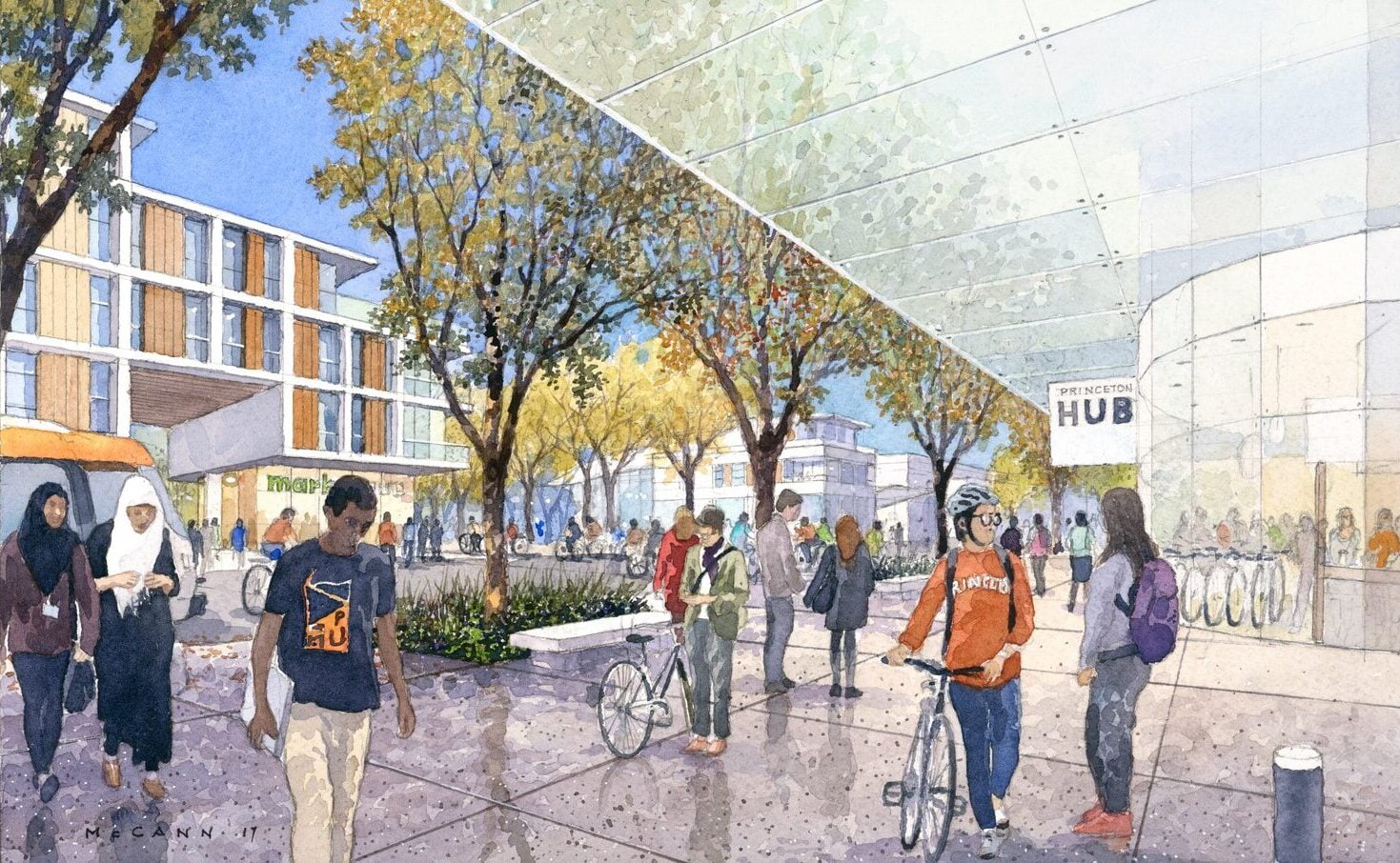Transit as a catalyst.
At Urban Strategies we view transit as a starting point for a whole range of city-building initiatives. From providing a greater range of housing opportunities and creating new places for people to work and play, to creating more mixed-use, pedestrian friendly environments, transit investment can be an important tool to shape our environment. We have developed strategies for creating transit-supportive communities and have crafted numerous designs and policies for transportation agencies to achieve that goal.
The firm has an award-winning portfolio of projects in Canada and the United States that optimize land use/transit relationships, with a skill set that goes beyond just transit-supportive design into wider community and regional design. We are also recognized experts in the development and management of successful public/private proposal call processes that can implement such transit-oriented community strategies.
- Regional Transportation Strategies
- Corridor Strategies
- Station Area Planning
- Mobility Hub Planning
- Station Strategies and Guidelines
- Public Engagement
- Community Building Strategies
- Airport and Aerotropolis Strategies

Ontario Transit Supportive Guidelines
Winner: 2012 Canadian Institute of Planners Award of Excellence in Planning Publications
Winner: 2012 Ontario Provincial Planners Institute Award of Excellence Communications/Public Education
Airport Strategies
We have a strong practice in airport planning, specifically within a regional context, and considering the airport as an economic and employment asset. More than ever, world-class airports are essential ingredient for cities to compete on the global scale. People are increasingly choosing to visit and settle in diverse, metropolitan city-regions that offer a high quality of life, economic opportunity and connectivity to the rest of the globe. Worldwide, the appetite for global air travel is expanding and people expect to be able to easily travel from their city-region to virtually anywhere to pursue personal experiences or business opportunities. Leading cities leverage their airports as key economic drivers, regional connectors, and as anchors for major employment centres. The functional boundaries between successful cities and airports are dissipating and planning strategies must reflect this and enable a mutually-beneficial relationship between airports and their city-regions.
To realize the full economic and connective potential of an airport for its city-region, planners must proactively plan for a complementary relationship between the air and ground transportations systems and establish a land use planning framework that will support a full range of employment activity within an aerotropolis zone. These planning processes must accommodate a variety of conditions, from efficient logistic parks that provide seamless ground-to-air connectivity to attractive and employment areas that can attract and retain the best companies and employees.

Billy Bishop Toronto Airport Expansion Study

Manchester Airport City

Toronto Pearson Airport Capacity Study
“Growth is coming. The time to plan for it is now.” – Howard Eng, CEO, Greater Toronto Airports Authority
Winner of 2016 Canadian Institute of Planners Award for Planning Excellence in Planning Publications

Canada Square
Canada Square is a 3.7 hectare (9.1 acre) site located at the intersection of Yonge Street and Eglinton Avenue.
Planning and designing communities that encourage transit use and alternative modes of transportation have always been fundamental to Urban Strategies’ work.

Transit-Oriented Affordable Housing Solutions Lab
Promoting the alignment of affordable housing and transit infrastructure development.

Calgary LRT & Station Area Planning

Eglinton Crosstown Study
The Eglinton Crosstown project is a multi-billion dollar investment in rapid transit infrastructure along Eglinton Avenue through the centre of Toronto.

Eglinton East Planning Study
Creating a vision for the corridor to guide change and leverage the transit investment to foster more complete communities.






